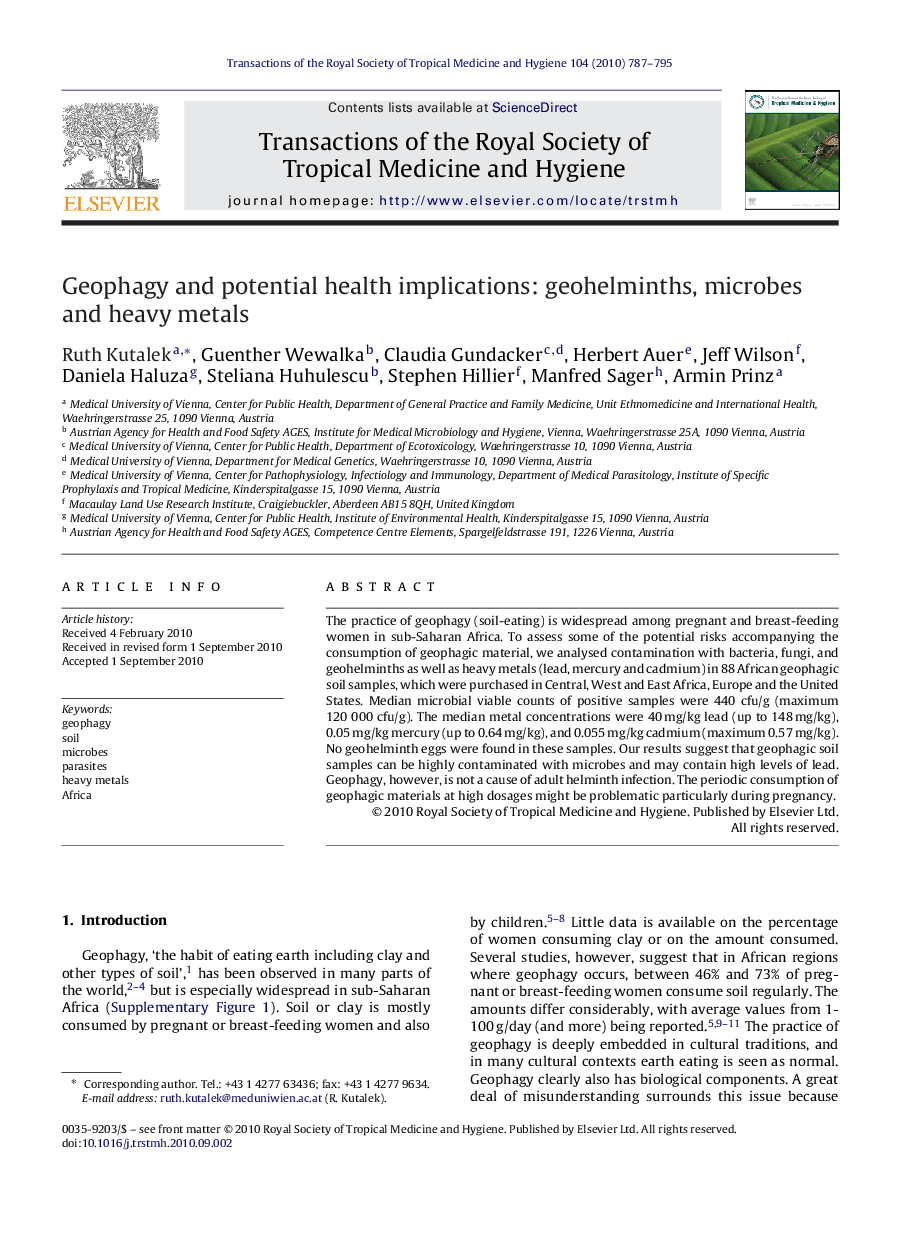| Article ID | Journal | Published Year | Pages | File Type |
|---|---|---|---|---|
| 3420553 | Transactions of the Royal Society of Tropical Medicine and Hygiene | 2010 | 9 Pages |
SummaryThe practice of geophagy (soil-eating) is widespread among pregnant and breast-feeding women in sub-Saharan Africa. To assess some of the potential risks accompanying the consumption of geophagic material, we analysed contamination with bacteria, fungi, and geohelminths as well as heavy metals (lead, mercury and cadmium) in 88 African geophagic soil samples, which were purchased in Central, West and East Africa, Europe and the United States. Median microbial viable counts of positive samples were 440 cfu/g (maximum 120 000 cfu/g). The median metal concentrations were 40 mg/kg lead (up to 148 mg/kg), 0.05 mg/kg mercury (up to 0.64 mg/kg), and 0.055 mg/kg cadmium (maximum 0.57 mg/kg). No geohelminth eggs were found in these samples. Our results suggest that geophagic soil samples can be highly contaminated with microbes and may contain high levels of lead. Geophagy, however, is not a cause of adult helminth infection. The periodic consumption of geophagic materials at high dosages might be problematic particularly during pregnancy.
